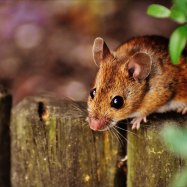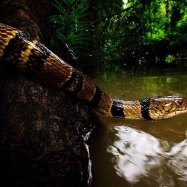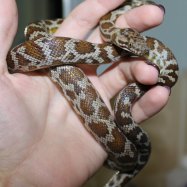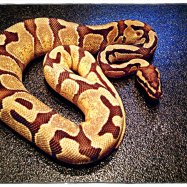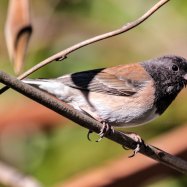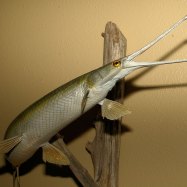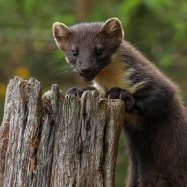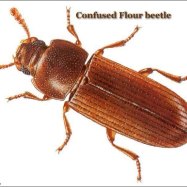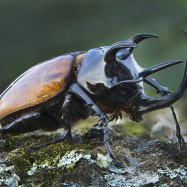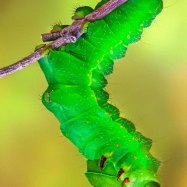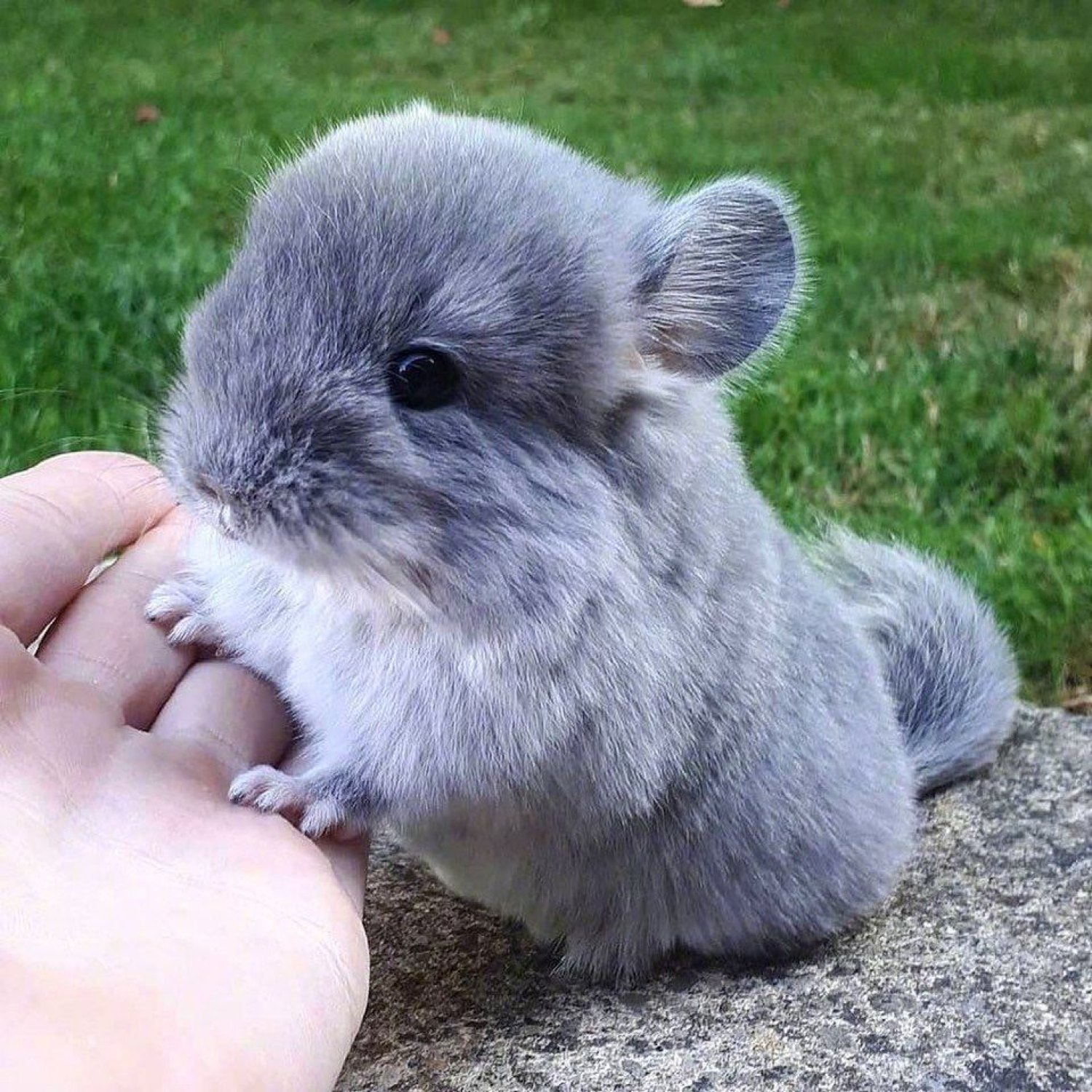
Chinchilla
9-15 inches
Chinchillas, native to the Andes Mountains, are cute and furry creatures with a compact and muscular body shape. They can grow up to 9-15 inches in length and belong to the family Chinchillidae. These high-altitude dwellers are popular as pets for their playful and social nature. #Chinchilla #AndesMountains #PetLove
Animal Details Summary:
Common Name: Chinchilla
Kingdom: Animalia
Habitat: Andean shrubland, rocky areas
Discovering the Enigmatic Chinchilla: A Small Rodent with a Big Personality
The animal kingdom is full of fascinating creatures, each with its unique set of characteristics and behaviors. Among these creatures, the chinchilla stands out as a small but mighty rodent with a striking appearance and an enigmatic personality. In this article, we will delve into the world of the chinchilla, exploring its scientific information, habitat, feeding habits, distribution, and other interesting facts.Meet the Chinchilla: A Small But Mighty Rodent
Scientifically known as Chinchilla lanigera, the chinchilla belongs to the Animalia kingdom and the Chordata phylum Chinchilla. It belongs to the class Mammalia, making it a distant relative of other well-known mammals such as the rabbit, guinea pig, and deer. The chinchilla is part of the Rodentia order, which includes other rodents such as mice, rats, and squirrels. It is the sole member of the Chinchillidae family, making it a unique creature in the animal world.Discovering the Habitat of the Chinchilla
The chinchilla is native to South America, specifically Chile, making it a significant contribution to the continent's rich biodiversity. It is typically found in the Andean shrublands and rocky areas, where it can find shelter and thrive. Being highly adapted to life in the mountains, chinchillas can be found at high altitudes in the Andes Mountains, where they have evolved to survive in harsh conditions.Due to their thick fur and compact body shape, chinchillas are well-suited for high altitudes where temperatures can drop below freezing. Their dense fur also helps in insulation, trapping body heat and keeping them warm. In addition, the rocky terrain provides the chinchilla with natural hiding places, helping it avoid predators such as birds of prey and wild cats Cat.
Nutrition and Feeding Habits of the Chinchilla
Chinchillas are herbivorous animals, meaning they feed on plants and vegetation. In their natural habitat, chinchillas primarily consume grass, plants, and seeds, which make up the majority of their diet. Due to the harsh conditions of their habitat, chinchillas have evolved to be able to survive on very little food and water. They have a highly efficient digestive system that allows them to extract all the necessary nutrients from their food, making them well-adapted to their environment.In captivity, chinchillas are commonly fed a diet of alfalfa hay, commercial chinchilla pellets, and occasional treats such as fresh fruits and vegetables. It is important to maintain a balanced and nutritious diet for chinchillas, as their sensitive digestive systems can be easily upset by improper food.
Geographical Distribution and Country of Origin
As mentioned earlier, chinchillas are native to South America, specifically Chile, making it their country of origin. However, due to the high demand for their beautiful fur, they have been introduced to other parts of the world, including the United States and Europe. In their natural habitat, chinchillas can be found in the Andean regions of Chile, Peru, Bolivia, and Argentina, where they thrive in the high-altitude mountainous areas.A Closer Look at the Chinchilla: Physical Characteristics
One of the most striking features of the chinchilla is its soft and dense fur, which comes in shades of gray, white, and beige. This beautiful coat is not only aesthetically pleasing but also serves a vital purpose in keeping the chinchilla warm and protected from the elements. Chinchillas also have large ears and eyes, giving them excellent hearing and eyesight, which is crucial for survival in the wild.Chinchillas have a compact and muscular body shape, measuring about 9-15 inches in length. They have long hind legs, which allow for quick and agile movements, making it easier for them to navigate through rocky terrain. Their unique body shape also allows them to carry their long tails almost horizontally, providing them with additional balance and stability when running and leaping.
The Social Life of Chinchillas
In their natural habitat, chinchillas are social animals, living in colonies of up to 100 individuals. Female chinchillas are called "chinchillines," while males are known as "chinchillones." These playful animals are known to be highly energetic, and they often engage in activities such as chasing, grooming, and wrestling with each other. They also communicate through vocalizations, such as squeaks and chirps, and through their sense of touch, using their whiskers to detect changes in their environment.Chinchillas are also known for their unique dust baths, which are essential for maintaining their thick coats. In the wild, they use the dust from volcanic ash to clean their fur and remove any excess oils. In captivity, owners can provide special dust baths for their chinchillas to mimic this natural behavior, promoting healthy and soft fur.
Conservation Efforts and the Future of Chinchillas
Sadly, due to overhunting and habitat destruction, chinchilla populations in the wild have significantly declined, making them a critically endangered species. Their thick and beautiful fur has been highly sought after for the fur trade, leading to a significant decline in their numbers in the early 20th century. However, thanks to conservation efforts, including breeding programs and protection of their habitat, the chinchilla population has shown signs of recovery in recent years.In addition, chinchillas have become popular as pets, with many people adopting them and providing them with loving homes. As a result, there has been a decrease in the demand for wild-caught chinchillas, easing the burden on their wild populations. However, it is essential to ensure responsible and ethical breeding practices to promote the welfare of these animals and avoid potential health issues.
The Enigmatic Chinchilla: A Wild and Playful Companion
In conclusion, the chinchilla is a unique and fascinating animal, possessing a range of physical and behavioral traits that make it stand out among other rodents. From its beautiful coat to its playful and social nature, the chinchilla has captured the hearts of people around the world. As a critically endangered species, it is crucial to continue conservation efforts and ensure the survival of these incredible creatures for generations to come. Whether in the wild or as pets, chinchillas are a joy to behold and a reminder of the remarkable diversity of life on our planet.

Chinchilla
Animal Details Chinchilla - Scientific Name: Chinchilla lanigera
- Category: Animals C
- Scientific Name: Chinchilla lanigera
- Common Name: Chinchilla
- Kingdom: Animalia
- Phylum: Chordata
- Class: Mammalia
- Order: Rodentia
- Family: Chinchillidae
- Habitat: Andean shrubland, rocky areas
- Feeding Method: Herbivorous
- Geographical Distribution: South America
- Country of Origin: Chile
- Location: High altitudes in the Andes Mountains
- Animal Coloration: Gray, white, beige
- Body Shape: Compact and muscular
- Length: 9-15 inches
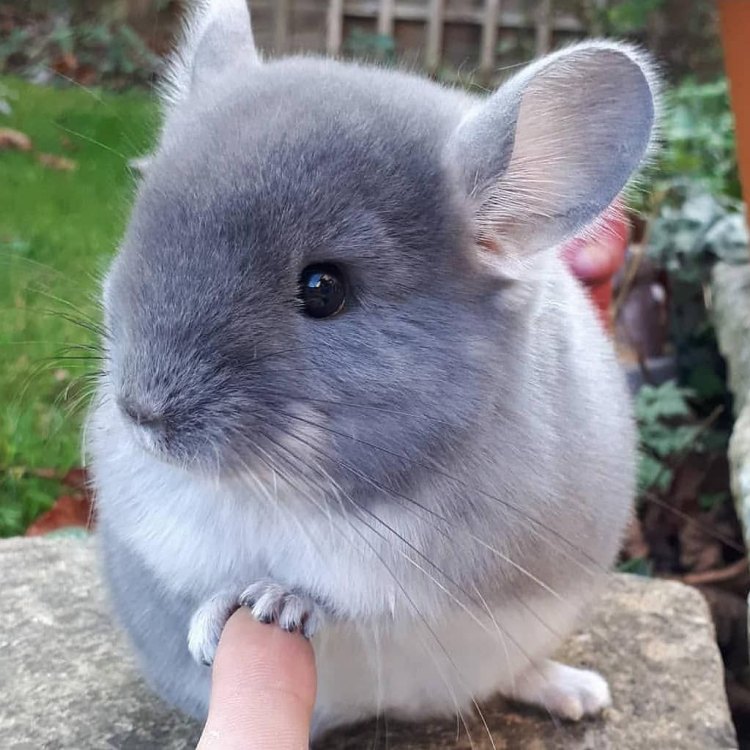
Chinchilla
- Adult Size: Medium-sized
- Average Lifespan: 10-20 years
- Reproduction: Sexual
- Reproductive Behavior: Polygynous
- Sound or Call: Barking, chirping, purring
- Migration Pattern: Non-migratory
- Social Groups: Group-living
- Behavior: Nocturnal, agile climbers, dust bathing
- Threats: Habitat loss, hunting for fur and meat
- Conservation Status: Endangered
- Impact on Ecosystem: Seed dispersal, prey for predators
- Human Use: Pet trade, fur industry
- Distinctive Features: Large ears, soft dense fur
- Interesting Facts: Have the softest fur of any land mammal, can jump up to 6 feet in the air
- Predator: Foxes, owls, snakes
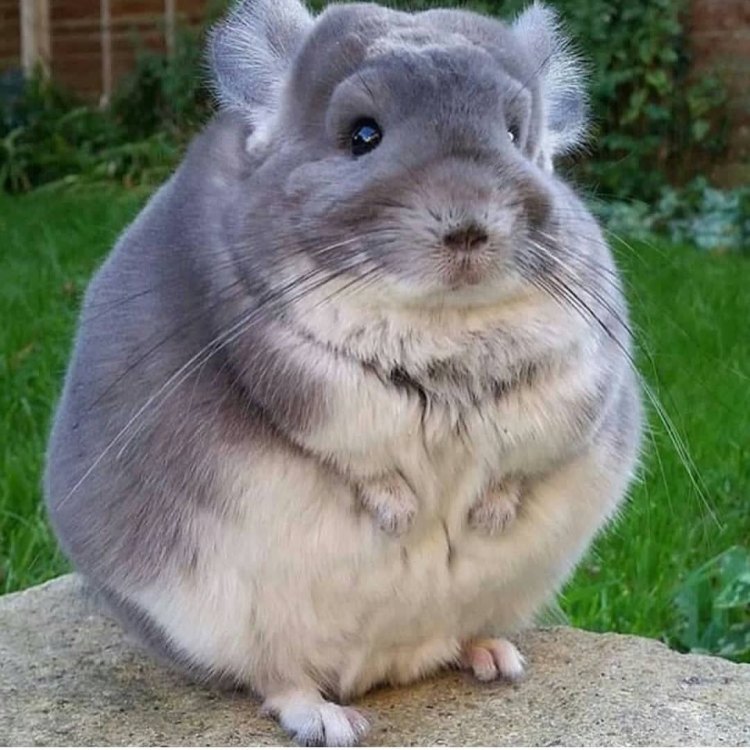
Chinchilla lanigera
The Charming Chinchilla: Endangered Cuties with Unique Features
Imagine a creature with large adorable ears, soft dense fur, and a playful personality. Now, imagine that this creature is only found in a select few parts of the world and is in danger of becoming extinct. This is the reality of the chinchilla, a unique and lovable mammal that captures the hearts of many with its distinctive features and interesting behaviors.Chinchillas are medium-sized rodents that are native to the Andes Mountains in South America PeaceOfAnimals.Com. They can be found living in rocky and arid habitats, such as mountainsides and cliffs. These furry creatures are known for their soft and dense fur, which helps them regulate their body temperature in their high-altitude home.
Average Lifespan and Reproduction
Chinchillas have an impressively long lifespan, with an estimated average of 10 to 20 years in the wild. In captivity, they can even live up to 30 years. This means that once you become a proud chinchilla owner, you are making a commitment to caring for your adorable pet for many years to come.In terms of reproduction, chinchillas are sexual beings. This means that they reproduce through sexual intercourse between a male and a female. Mating usually occurs from late fall to early winter and can continue until early spring. During this time, male chinchillas compete for females by displaying their dominance through rituals and vocalizations Chinese Shar Pei.
Polygynous Behavior and Social Groups
Chinchillas are polygynous, which means that one male has multiple female partners. In the wild, this is a successful reproductive strategy as it ensures the survival of the species. A male chinchilla establishes a territory and then mates with all the females in that area.Chinchillas are also known for their social behavior, living in groups of up to 100 individuals. These groups are called "herds", and they have a hierarchical structure with one dominant male and multiple females. Chinchillas within a herd communicate with each other through various vocalizations, including barking, chirping, and purring.
Nocturnal and Agile Climbers
Chinchillas are nocturnal creatures, meaning they are most active at night. This is likely due to their high-altitude habitat, where temperatures can drop significantly at night, making it more comfortable for them to forage and hunt. Being nocturnal also helps them avoid predators, as they are less vulnerable to detection in the dark.Chinchillas are also agile climbers, thanks to their long hind legs and sharp claws. They use their climbing skills to evade predators such as foxes, owls, and snakes. They can also jump up to 6 feet in the air, making it easier for them to navigate rocky and uneven terrain.
Dust Bathing and Other Behaviors
One of the most intriguing behaviors of chinchillas is their love for dust bathing. In the wild, they roll around in fine volcanic ash or other fine dust particles to keep their fur clean and free of oil and dirt. This behavior has also been observed in captive chinchillas, and pet owners often provide them with a dust bath as part of their grooming routine.Aside from dust bathing and climbing, chinchillas are also known for their ability to freeze when threatened. This defense mechanism, known as "playing dead", helps them avoid detection from predators. They also have a keen sense of smell and excellent hearing, making them alert and cautious in their mostly unexplored habitat.
Threats to the Chinchilla Population
Unfortunately, the charming chinchillas are facing several threats in the wild, leading to a decline in their population. The primary cause of their endangerment is habitat loss due to mining, agriculture, and urban development. This not only reduces their available living space but also affects their food sources and water supply.Another significant threat to chinchillas is hunting, particularly for their fur and meat. Chinchilla fur is one of the softest and most luxurious in the world, making it highly desirable in the fur trade industry. Additionally, chinchillas used to be considered a delicacy in some parts of South America, leading to overhunting and a decline in their numbers.
Conservation Efforts and Impact on the Ecosystem
The International Union for Conservation of Nature (IUCN) has listed chinchillas as "endangered" on their Red List of Threatened Species. This designation is a call to action for conservation efforts to protect these vulnerable creatures from extinction.Aside from being an important species to preserve for their own sake, chinchillas also play a critical role in the ecosystem. They are seed dispersers, helping in the reproduction of plants and contributing to a diverse ecosystem. They are also prey for various predators, ensuring a healthy balance of the food chain.
Human Use and Interesting Facts
Chinchillas have been domesticated and kept as pets for hundreds of years. They are now popular pets due to their soft fur, lively personalities, and long lifespans. However, it is essential to note that chinchillas are not domesticated animals, and their care requires knowledge and understanding of their natural behaviors and needs.In addition to being kept as pets, chinchillas also have a significant role in the fur industry. Historically, their fur was used to make warm coats and other high-end clothing items. However, as more people become aware of the decline in their population, alternative options such as faux fur are becoming more popular.
Interestingly, chinchillas have the softest fur of any land mammal. Their fur is so dense that parasites cannot live in it, making them relatively clean animals. They also have around 60 hairs growing from each hair follicle, compared to just one in humans.
In Conclusion
Chinchillas may seem like just another adorable animal in the wilderness, but they have unique features and behaviors that make them stand out. Their soft fur, dust bathing, ability to climb and jump, and social behaviors all contribute to their charm and appeal.Unfortunately, these charming creatures face numerous threats, including habitat loss and hunting, which have led to their listing as endangered. It is crucial for humans to understand the impact of their actions on the delicate balance of the ecosystem and take steps to conserve and protect these remarkable animals. By raising awareness and supporting conservation efforts, we can ensure that future generations will get to appreciate the beauty and uniqueness of the chinchilla.

Discovering the Enigmatic Chinchilla: A Small Rodent with a Big Personality
Disclaimer: The content provided is for informational purposes only. We cannot guarantee the accuracy of the information on this page 100%. All information provided here may change without prior notice.

